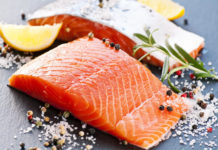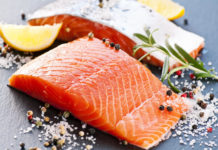
Getting iron is critical for babies' brain development, especially starting around six months when their natural stores become depleted. Yet baby cereal, a common first food, contains a form of iron that's not well absorbed by the body–while meat, a rich source of the more easily absorbed type of iron, is often postponed until near the end of the first year of life.
Feeding advice used to include a specific timetable of when foods should be introduced, and meat came after cereal, veggies, and fruit. "Many people don't realize that there's no evidence that introducing foods in a certain order such as veggies before fruit makes any difference at all," says Keli Hawthorne, RD, the director for clinical research for the Department of Pediatrics at Dell Medical School, University of Texas at Austin. The American Academy of Pediatrics says meat can be introduced along with other foods at six months, yet most parents wait until about nine months.
Iron is key for brain development because it's involved in creating the protective coating (called myelin) that surrounds nerve fibers in the brain. If there's not enough myelin, the brain can't function at full capacity. "This may be why we see problems with concentration and attention in school in children who are iron deficient," says Hawthorne.
Only about three percent of the iron from fortified baby cereals is available to the body, versus roughly 12-15 percent from animal foods, says Hawthorne. That's because the form of iron found in in plants, called non-heme iron, isn't as easy for the body to absorb as the heme iron in foods like meat.
But it isn't always easy to find convenient options for pureed meats. Some brands of baby food wait until their stage two or three foods to include meat. And jarred pureed meats may not look very appealing to parents.
Here's Hawthorne's advice for making sure your baby gets the iron she needs:
Sally Kuzemchak, MS, RD, is a registered dietitian, educator, and mom of two who blogs at Real Mom Nutrition. She is the author of The 101 Healthiest Foods For Kids. She also collaborated with Cooking Light on Dinnertime Survival Guide, a cookbook for busy families. You can follow her on Facebook, Twitter, Pinterest, and Instagram. In her spare time, she loads and unloads the dishwasher. Then loads it again.





